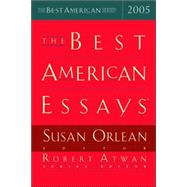
| Foreword | ix | ||||
|
|||||
| Introduction | xv | ||||
|
|||||
| ROGER ANGELL. | |||||
|
1 | (8) | |||
|
|||||
| ANDREA BARRETT. | |||||
|
9 | (12) | |||
|
|||||
| PAUL CRENSHAW. | |||||
|
21 | (7) | |||
|
|||||
| BRIAN DOYLE. | |||||
|
28 | (3) | |||
|
|||||
| KITTY BURNS FLOREY. | |||||
|
31 | (6) | |||
|
|||||
| JONATHAN FRANZEN. | |||||
|
37 | (19) | |||
|
|||||
| IAN FRAZIER. | |||||
|
56 | (6) | |||
|
|||||
| MARK GREIF. | |||||
|
62 | (12) | |||
|
|||||
| EDWARD HOAGLAND. | |||||
|
74 | (26) | |||
|
|||||
| TED KOOSER. | |||||
|
100 | (6) | |||
|
|||||
| JONATHAN LETHEM. | |||||
|
106 | (15) | |||
|
|||||
| E.J. LEVY. | |||||
|
121 | (10) | |||
|
|||||
| MICHAEL MARTONE. | |||||
|
131 | (4) | |||
|
|||||
| DAVID MASELLO. | |||||
|
135 | (4) | |||
|
|||||
| DANIELLE OFRI. | |||||
|
139 | (12) | |||
|
|||||
| SAM PICKERING. | |||||
|
151 | (10) | |||
|
|||||
| OLIVER SACKS. | |||||
|
161 | (34) | |||
|
|||||
| CATHLEEN SCHINE. | |||||
|
|||||
|
|||||
| DAVID SEDARIS. | |||||
|
195 | (8) | |||
|
|||||
| PAULA SPECK. | |||||
|
203 | (5) | |||
|
|||||
| BERT O. STATES. | |||||
|
208 | (14) | |||
|
|||||
| ROBERT STONE. | |||||
|
222 | (20) | |||
|
|||||
| ELLEN ULLMAN. | |||||
|
242 | (10) | |||
|
|||||
| DAVID FOSTER WALLACE. | |||||
|
252 | (27) | |||
|
|||||
| HOLLY WELKER. | |||||
|
279 | (1) | |||
|
|||||
| Biographical Notes | 279 | (6) | |||
| Notable Essays of 2004 | 285 |
The New copy of this book will include any supplemental materials advertised. Please check the title of the book to determine if it should include any access cards, study guides, lab manuals, CDs, etc.
The Used, Rental and eBook copies of this book are not guaranteed to include any supplemental materials. Typically, only the book itself is included. This is true even if the title states it includes any access cards, study guides, lab manuals, CDs, etc.
Excerpted from The Best American Essays
All rights reserved by the original copyright owners. Excerpts are provided for display purposes only and may not be reproduced, reprinted or distributed without the written permission of the publisher.